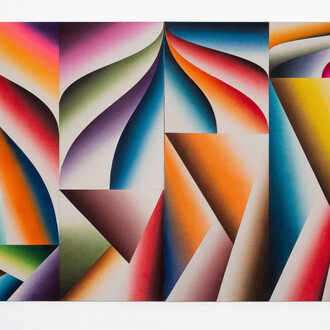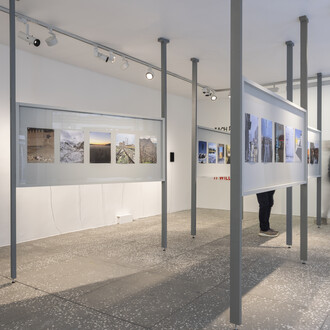Jevgeni Zolotko’s large solo exhibition in the Kumu Art Museum displays some of the earlier chapters of his creative legacy and creates new ones. The secret of Adam is an exhibition that consists of various works, and constitutes his most massive work thus far, synthesising recurrent subjects and images in his oeuvre. Zolotko, who entered the art scene in the late 2000s, is one of the most idiosyncratic contemporary artists in Estonia. Instead of dealing with the topical and political, the context of his art is Western cultural history in the broadest sense, embracing antiquity, the Bible, belles-lettres, philosophy and folklore. His works deal with human existence: life, death, loneliness, silence and decay, as well as hope.
Curator Triin Tulgiste-Toss (1987–2024) about the exhibition:
While it is often possible to point out shifts in artists’ choices of subject matter or emphasis over time, Zolotko’s art can be compared to a tower: every new work of art grows out of the previous one, specifying and elaborating on what has been said. The secret of Adam combines previously used elements and those that have been developed further with completely new ones, returning to the central issue in Zolotko’s art: the question of the relationship between things and language.
It seems like the artist is finally providing us with a clear answer. Words are as old as the first human being and inseparable from his nature, serving in addition to the physical body as a way of communicating with the world and understanding it. The realisation that we need both the physical and language to cope in society becomes evident.
According to Zolotko, his works are not autobiographical, and his main interest in art is to deal with universal topics. Considering the emotional effects of his works and their perceptiveness, one gets the sense, however, that only a person whose works emanate from personal experience and acknowledgement, not theoretical ideas, can say something like that.
The purpose of Zolotko’s works has never been to generate intellectual reflection but to induce recognition. You may approach them like a detective trying to find the clues hidden in the installations, but by doing so you will miss something intrinsic. Zolotko’s works are meant to be inside of, like being in nature, and it seems that the sole purpose of the artist is to make sure that the viewer does not feel alone during these moments.
















